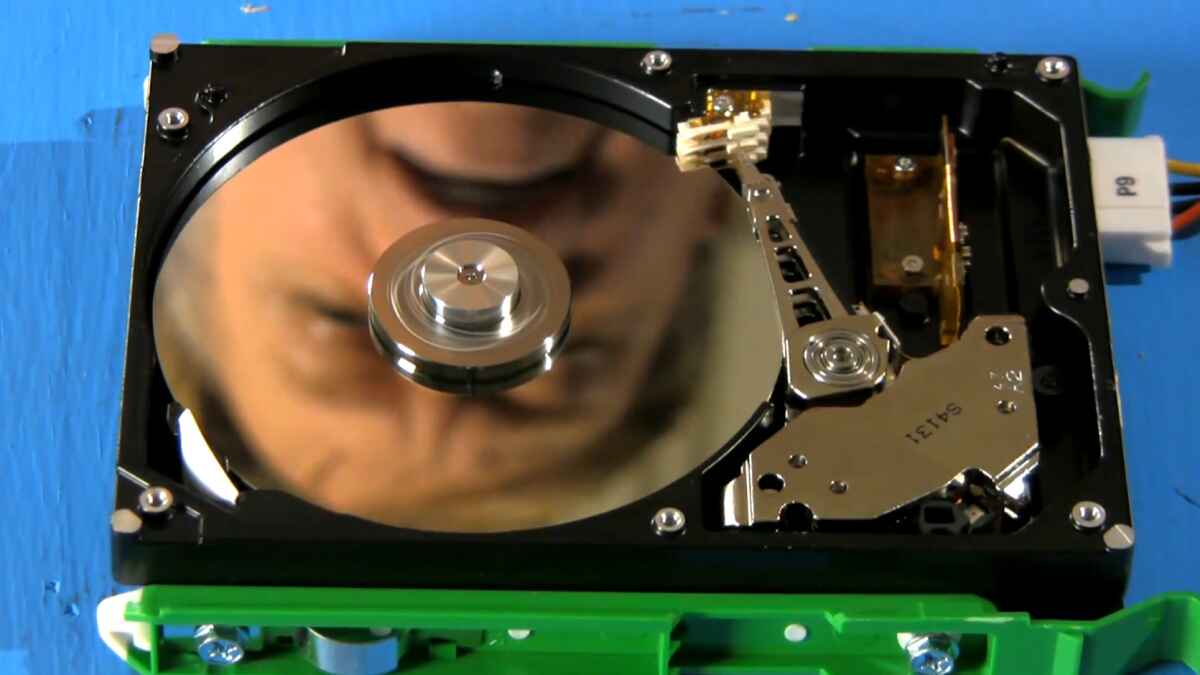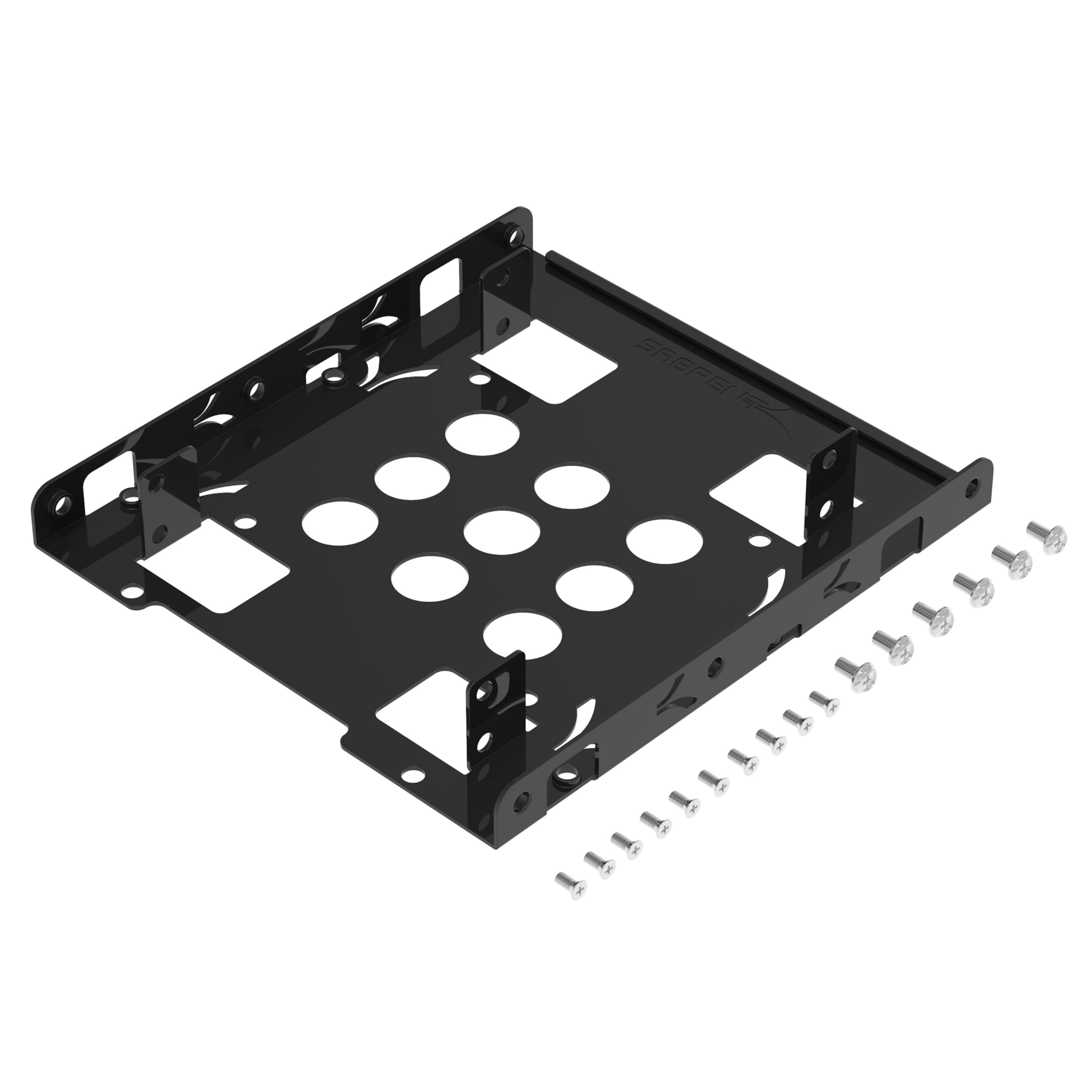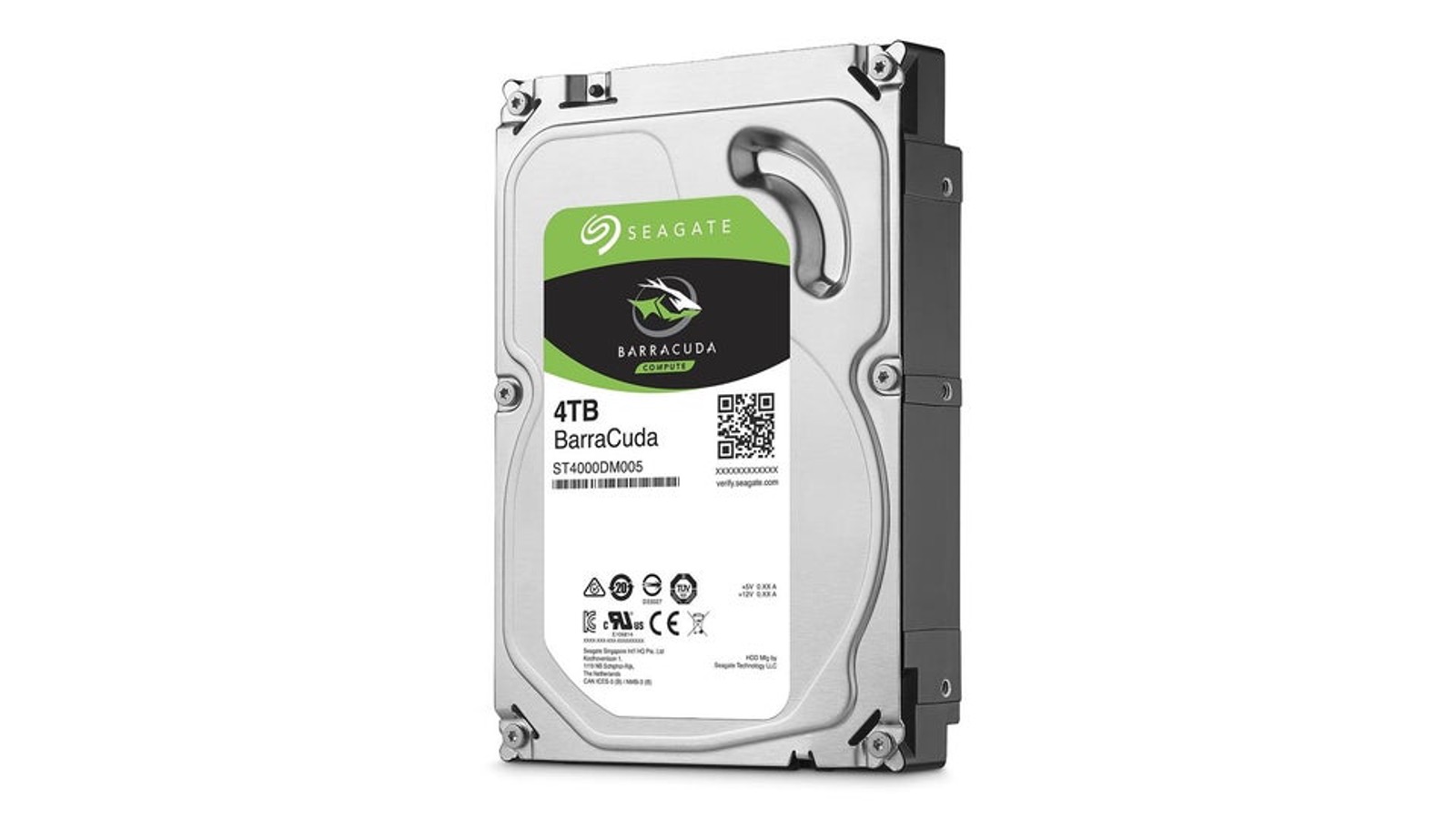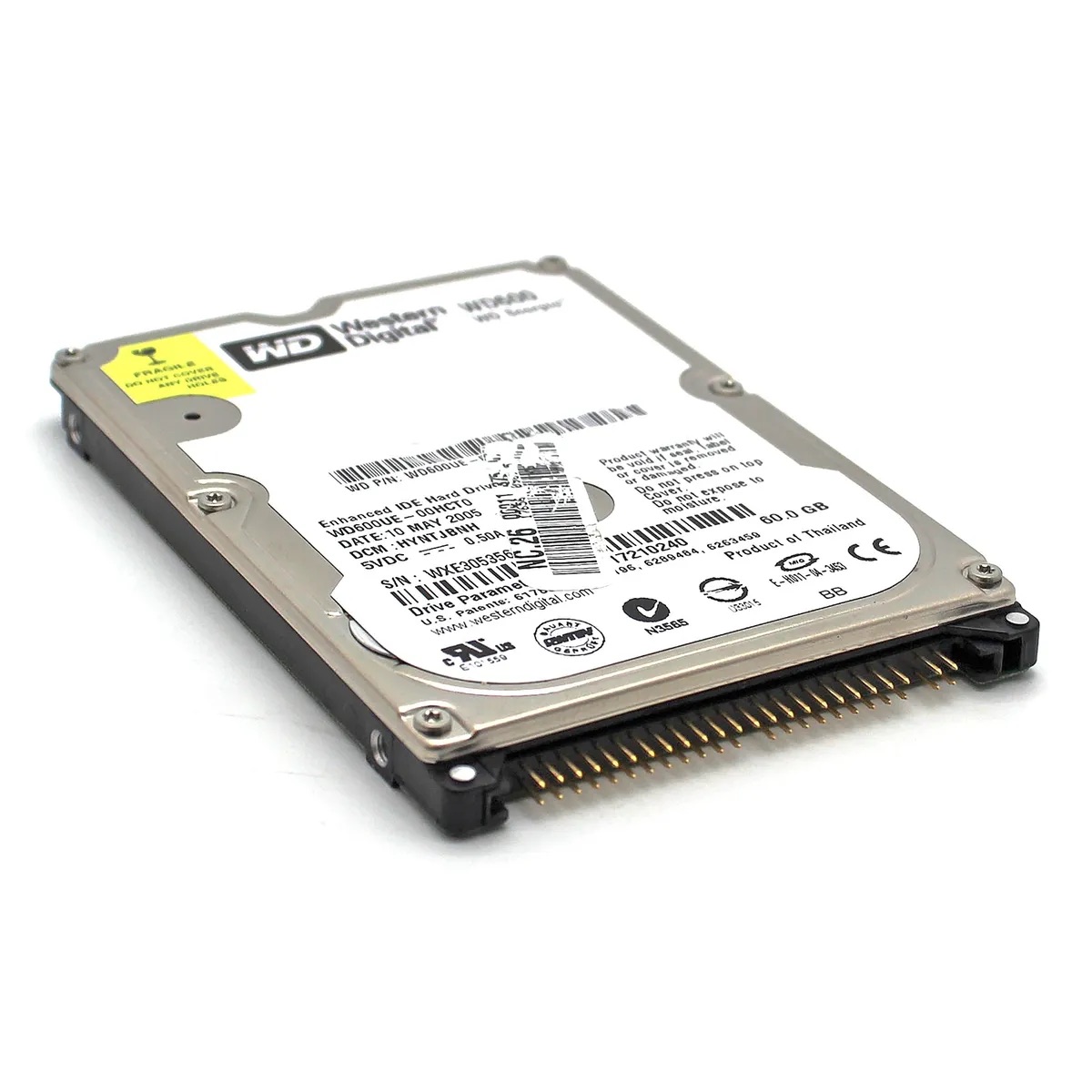Introduction
A hard disk drive (HDD) is an essential component of modern computers and electronic devices, responsible for storing and retrieving vast amounts of digital data. From the operating system to user files, everything is stored on the hard disk drive. Understanding how these devices work can help us appreciate their importance and make informed decisions about storage options.
In this article, we will take a closer look at the inner workings of hard disk drives, explore the components that make them function, and highlight the factors that influence their performance. We will also touch upon the differences between hard disk drives and solid-state drives (SSDs), another popular storage option in modern computing.
Hard disk drives have come a long way since their introduction in the late 1950s. Today, they are more compact, faster, and capable of storing significantly greater amounts of data. The advancements in technology have revolutionized the way we store, access, and manage digital information.
Whether you are a computer enthusiast, a professional working with large datasets, or simply curious about the technology that powers our digital lives, this article will provide valuable insights into the functioning of hard disk drives and the integral role they play in modern computing.
So, let’s dive into the fascinating world of hard disk drives and unravel the mysteries behind their data storage and retrieval processes.
Overview of a Hard Disk Drive
A hard disk drive, often referred to as a hard drive or HDD, is a non-volatile storage device used to store and retrieve digital data. It is the primary storage device in most computers and is also found in external storage solutions.
The main components of a hard disk drive include platters, spindles, an actuator arm, and read/write heads. The platters are circular metallic disks coated with a magnetic material that stores data. These platters spin at high speeds, typically ranging from 5,400 to 15,000 revolutions per minute (RPM).
The spindle, also known as the motor, is responsible for rotating the platters at a consistent speed. It ensures that the read/write heads can access the desired data location on the platters accurately and efficiently.
The actuator arm, controlled by a voice coil motor, moves the read/write heads across the surface of the platters. The heads are positioned just above the platter surface but do not touch it. When the hard drive is in operation, the actuator arm positions the read/write heads over the specific data tracks on the platters.
The read/write heads are the part of the hard drive that reads and writes data onto the platters. When data is written to the hard drive, the magnetic field of the platter is altered to represent the data. When data is read, the read/write heads detect the magnetic changes on the platter and convert them into usable digital information.
Hard disk drives use magnetism to store data, with each platter divided into tracks and sectors. Tracks are concentric circles on the platter’s surface, while sectors are smaller divisions within each track. The combination of tracks and sectors allows for efficient data organization and retrieval.
Overall, the hard disk drive’s operation involves a delicate interplay between the spinning platters, the precise movement of the read/write heads, and the coordinated control of the actuator arm. This intricate process enables the storage and retrieval of vast amounts of data.
In the next sections, we will delve deeper into the specific mechanisms involved in the read and write operations of a hard disk drive, as well as explore some factors that impact its performance.
Inside a Hard Disk Drive
To fully understand how a hard disk drive functions, let’s take a closer look inside this remarkable storage device. Upon opening a hard drive, you would find a series of intricate components working harmoniously to store and retrieve data.
At its core, a hard disk drive consists of one or more platters made of a rigid material, such as aluminum or glass. These platters are coated with a magnetic material, which allows for data storage. The number of platters inside a hard drive depends on its capacity and design.
The platters are mounted on a spindle, which rotates them at high speeds. The spindle motor ensures that the platters spin at a consistent speed, typically ranging from 5,400 to 15,000 revolutions per minute (RPM).
The read/write heads, attached to an actuator arm, float just above the surface of the spinning platters. The heads are incredibly small and delicately positioned to prevent any physical contact with the platter surface. This minuscule separation ensures the longevity of the hard drive and prevents potential data loss.
The actuator arm, controlled by a voice coil motor, moves the read/write heads across the platters. It is responsible for positioning the heads precisely over the desired data tracks on the platters. The rapid movement of the actuator arm allows for fast data access and retrieval.
When it comes to data storage, each platter is divided into concentric circles called tracks. Each track is further divided into smaller divisions known as sectors, which are the basic units of data storage. The read/write heads access specific sectors on the platters to read or write data.
Data is stored on the platters using magnetism. This means that, during the data writing process, the read/write heads alter the magnetic field of the platter’s surface to represent the binary data. When it comes time to read the data, the read/write heads detect the magnetic changes on the platter and translate them into usable digital information.
The read/write process on a hard disk drive is incredibly fast and precise. The read/write heads can move across the platters at extraordinary speeds to access data located on different tracks and sectors. The coordination between the spinning platters, the actuator arm, and the read/write heads allows for efficient data storage and retrieval.
Now that we have explored the internal components and operations of a hard disk drive, in the next section, we will delve into the intricate mechanisms involved in the read and write processes.
Read and Write Operations
The primary function of a hard disk drive is to read and write data to and from the platters. This process involves precise movements of the read/write heads and the alteration of magnetic fields on the platter’s surface.
When it comes to data write operations, the computer sends a signal to the hard disk drive requesting that specific data be written. The hard drive then locates an available spot on the platters and positions the corresponding read/write heads over the desired data track. Once in position, the write operation begins.
During a write operation, the read/write heads use an electromagnetic coil to create a magnetic field. This magnetic field alters the magnetic orientation of the tiny magnetic regions on the platter’s surface, representing the binary data being written. The change in orientation can be either a magnetic field reversal or a preservation of the current field.
On the other hand, the process of reading data follows a similar set of steps. When the computer requests to access specific data, the hard drive locates the correct track on the platters and positions the read/write heads accordingly.
During a read operation, the read/write heads pass over the desired data track, sensing the magnetic changes on the platter’s surface. These magnetic changes induce small electrical currents in the read/write heads, which are then converted into digital data for the computer to process.
Both the read and write operations are performed at incredible speeds. The read/write heads move across the platters in a fraction of a second, ensuring efficient data retrieval or storage. The speed and precision of these operations are crucial in maintaining the performance and reliability of the hard disk drive.
It is worth noting that the data writing process on a hard disk drive is not always sequential. Instead of writing data in a continuous stream, the hard drive may allocate available spaces on different areas of the platters. This non-sequential allocation is known as fragmented data. Over time, as data is deleted, the hard drive may use these fragmented spaces to store new data, leading to fragmented data structures.
Fragmented data can impact the performance of the hard drive, as the read/write heads need to jump between different locations on the platters to access the fragmented data. This can result in increased read/write times and reduced overall performance. To mitigate the impact of fragmentation, operating systems and software often include tools to defragment hard drives, reorganizing the data for improved efficiency.
Now that we have explored the read and write operations, as well as the potential issue of fragmentation, in the next section, we will take a closer look at the platters and spindles that play a crucial role in the functionality of a hard disk drive.
Platters and Spindles
The platters and spindles are essential components of a hard disk drive, responsible for the physical storage and rotation of data.
Platters, also known as disks, are circular plates made of a rigid material, typically aluminum or glass. They are coated with a magnetic material that allows for data storage. A hard disk drive can have multiple platters stacked on top of each other.
Each platter is divided into concentric circles called tracks and further divided into sectors. These tracks and sectors form the basic units of data storage on the platter’s surface. The read/write heads access specific tracks and sectors to read or write data.
The platters spin at high speeds, typically ranging from 5,400 to 15,000 revolutions per minute (RPM). This rotational speed plays a crucial role in determining the performance of the hard disk drive. The faster the platters spin, the faster the read and write operations can be performed.
Inside the hard disk drive, the platters are mounted on a central spindle. The spindle, also known as the motor, ensures that the platters rotate at a consistent speed. It provides the necessary rotational force to maintain the smooth and continuous spinning of the platters.
The spindle motor operates using various technologies, including brushless direct current (DC) motors and fluid dynamic bearings (FDB). These technologies help reduce friction, heat, and noise, ensuring efficient and reliable performance of the hard disk drive.
The spindle speed is measured in revolutions per minute (RPM) and determines the latency and data transfer rate of the hard disk drive. Higher RPMs generally result in faster data access and transfer speeds. However, higher RPMs also increase power consumption and heat generation.
Aside from the rotational speed, factors such as platter density and data recording technology also impact the overall performance of the hard disk drive. With advancements in technology, modern hard drives can store more data on each platter, increasing their overall capacity and efficiency.
It is important to note that the design and configuration of platters and spindles can vary across different hard disk drive models and manufacturers. Each design choice influences the performance, reliability, and durability of the hard drive.
In the next section, we will explore the essential role of the actuator and read/write heads in the functionality of a hard disk drive.
The Role of Actuator and Read/Write Heads
The actuator and read/write heads are vital components in a hard disk drive, responsible for positioning and accessing data on the platters.
The actuator, controlled by a voice coil motor, is an electromechanical mechanism that moves the read/write heads across the surface of the spinning platters. It plays a crucial role in accurately positioning the heads over specific data tracks.
When the computer requests access to a particular piece of data, the hard disk drive’s controller instructs the actuator to move the read/write heads to the appropriate track and sector on the platters. The actuator arm moves swiftly, guided by magnetic fields and a delicate suspension system, to position the heads with remarkable precision.
The read/write heads, located on the tip of the actuator arm, are responsible for reading and writing data onto the platters. These heads consist of a magnetic core wrapped with a tiny wire coil, creating an electromagnetic component capable of interacting with the magnetic fields on the platters.
During a write operation, the read/write heads generate a controlled magnetic field, effectively altering the magnetic orientation of the magnetic regions on the platters. This process encodes the binary data onto the platter’s surface, ready for storage.
Conversely, during a read operation, the read/write heads pass closely over the platter, sensing the magnetic changes induced by the previously written data. As the platters spin, the heads detect these changes, converting them into electrical signals that are then processed and interpreted as the original data by the computer.
The distance between the read/write heads and the platter surface is incredibly small, often measured in nanometers. This close proximity enhances the accuracy and sensitivity of data detection, ensuring reliable data retrieval.
To achieve the desired accuracy and precision, hard disk drive manufacturers implement various technologies to minimize contact and friction between the read/write heads and the platters. One such technology is called the flying-height control system, which uses aerodynamics and airflow to lift the heads slightly above the platter surface.
The coordination of the actuator arm and the read/write heads is critical for the efficient and reliable operation of a hard disk drive. The rapid movement of the actuator arm, combined with the precise control and sensing capabilities of the read/write heads, ensures swift access to the data stored on the platters.
In the next section, we will delve into the process of data storage and retrieval on a hard disk drive, and explore the mechanisms involved in error checking and correction.
Understanding Data Storage and Retrieval
Data storage and retrieval are intricate processes in a hard disk drive, involving the precise encoding and interpretation of digital information on the platters.
When data is written to a hard disk drive, the read/write heads alter the magnetic field of the platter’s surface. The magnetic material on the platters can be magnetized in two directions, representing binary data as the presence or absence of a magnetic field.
The platters are divided into concentric circles called tracks, and each track is further divided into smaller units called sectors. When writing data, the read/write heads position themselves over the appropriate track and sector and encode the binary data by altering the magnetic orientation of the platter’s surface.
During the writing process, the hard disk drive controller converts the digital data into a series of electrical signals that control the magnetic field generated by the read/write heads. This field, in turn, alters the magnetic regions on the platter’s surface, effectively storing the data.
When it comes to retrieving data, the process is reversed. The read/write heads pass over the platter’s surface, detecting the magnetic changes induced by the previously written data. As the heads sense these changes, they generate electrical signals that are then processed and interpreted as the original digital information.
The read/write process is incredibly fast and precise, allowing for efficient data access. The hard disk drive’s controller plays a crucial role in managing the read and write operations, ensuring accurate positioning of the read/write heads and facilitating reliable data storage and retrieval.
It is important to note that due to the physical nature of the magnetic storage technology used in hard disk drives, there is always a chance of errors or data loss. External factors such as magnetic interference or mechanical issues within the hard drive can potentially affect the integrity of the data.
To address these concerns, hard disk drives employ various error checking and correction mechanisms. Error checking codes (ECC) are embedded within the data, allowing the hard drive to detect and correct errors that may occur during the read and write process. ECC algorithms use mathematical calculations to verify the integrity of the data and make necessary corrections if errors are detected.
In cases where errors cannot be corrected, the hard disk drive’s firmware will attempt to recover as much data as possible using backup mechanisms and redundant storage techniques. This ensures that even if some sectors or tracks are compromised, the overall data integrity remains intact to the best extent possible.
Understanding the data storage and retrieval process within a hard disk drive enables us to appreciate the complex mechanisms and reliability measures implemented to safeguard our data. In the next section, we will explore some of the factors that can impact the performance of a hard disk drive.
Error Checking and Correction
Ensuring the integrity and reliability of data stored on a hard disk drive is a crucial consideration. To address the potential occurrence of errors, hard disk drives employ error checking and correction mechanisms.
One of the primary techniques used for error checking and correction is the implementation of Error Correction Codes (ECC). ECC algorithms are embedded within the data being written to the hard drive and allow for the detection and correction of errors that may occur during the read and write process.
When data is written to the hard disk drive, ECC codes are generated based on the stored data. These codes serve as additional information that can be used to validate the accuracy of the retrieved data during the read process.
During a read operation, the hard drive uses the ECC codes to check for any potential errors. If errors are detected, the hard drive’s firmware utilizes the error correction capabilities to recover and correct the erroneous data to the best extent possible.
The ECC algorithm employs mathematical calculations, often utilizing techniques such as parity checks and Hamming codes, to determine and correct errors in the data. By comparing the stored data to the ECC codes, any inconsistencies or errors can be identified and resolved.
It is important to note that while ECC can detect and correct many types of errors, it is not foolproof. There may be instances where errors are too severe or widespread, and the ECC algorithm may not be able to completely recover the data. In these cases, data loss or corruption can occur.
To further enhance the reliability of the data stored on hard disk drives, redundant storage techniques are often employed. Redundant arrays of inexpensive disks (RAID) is one such method commonly used. RAID configurations involve combining multiple hard disk drives to create a single logical drive that offers increased data redundancy and fault tolerance.
In a RAID setup, data is distributed across multiple hard disk drives, along with parity information that allows for the reconstruction of lost or corrupted data in case of a drive failure. This redundancy ensures that even if one or more drives fail, the data remains accessible and can be recovered.
While error checking and correction mechanisms can significantly minimize the risk of data corruption and loss, it is always recommended to have regular backups of critical data. Backing up data to external storage devices or cloud services provides an additional layer of protection and ensures that data can be recovered even in the event of a catastrophic failure of the hard disk drive.
By implementing robust error checking and correction techniques, as well as employing redundancy and backup strategies, hard disk drives strive to provide reliable data storage solutions. However, it is essential for users to remain vigilant and take proactive measures to safeguard their data.
In the next section, we will compare hard disk drives with solid-state drives (SSDs), another popular storage option, and explore the advantages and disadvantages of each.
Factors Affecting Hard Disk Drive Performance
Several factors can impact the performance of a hard disk drive (HDD), influencing its speed, reliability, and overall efficiency. Understanding these factors can help users make informed decisions when selecting and optimizing their storage solutions.
1. Rotational Speed: The rotational speed of the platters, typically measured in revolutions per minute (RPM), directly affects the performance of the hard disk drive. Higher RPMs result in faster read and write operations, as the read/write heads can access data more quickly. However, higher RPMs also tend to generate more heat and consume more power.
2. Storage Capacity: The storage capacity of a hard disk drive, measured in gigabytes (GB) or terabytes (TB), determines the amount of data that can be stored. Higher-capacity drives offer more space for files and applications but may experience slightly slower performance due to increased data density on the platters.
3. Data Transfer Rate: The data transfer rate of a hard disk drive defines how quickly data can be read from or written to the drive. It is influenced by multiple factors, including rotational speed, seek time, and interface technology (e.g., SATA or NVMe). Higher data transfer rates translate to faster performance.
4. Seek Time: Seek time refers to the time it takes for the read/write heads to position themselves over the desired data track on the platters. Lower seek times result in faster data access and retrieval. Seek time is influenced by factors such as platter density, actuator arm precision, and mechanisms that reduce mechanical vibrations.
5. Fragmentation: As files are deleted and new data is written to a hard disk drive, fragmentation can occur. Fragmentation refers to the scattering of file data across non-contiguous sectors on the platters. Fragmented data can impact performance, as the read/write heads need to move across different areas of the platters to access the complete file, leading to increased seek times.
6. Operating System and File System: The efficiency of the operating system’s file system, such as NTFS or APFS, can impact hard disk drive performance. File system optimizations, caching algorithms, and disk management strategies implemented by the operating system can influence the overall speed and responsiveness of the storage system.
7. Environmental Factors: The operating environment of a hard disk drive can affect its performance and longevity. Factors such as temperature, humidity, and mechanical shocks can impact the reliability and stability of the drive. It is crucial to ensure that the hard disk drive is kept within the specified temperature range and protected from physical damage.
Users can optimize the performance of their hard disk drives by defragmenting the drive periodically, organizing files in a logical manner, and maintaining adequate free space. Regularly updating device drivers and firmware, as well as installing the latest operating system updates, can also enhance performance.
When considering hard disk drives for specific applications, it is essential to align the drive’s specifications with the intended workload. For example, drives optimized for gaming or multimedia applications may prioritize higher data transfer rates and larger cache sizes to handle large files and high-demand scenarios.
In summary, factors such as rotational speed, storage capacity, data transfer rate, seek time, fragmentation, operating system optimization, and environmental conditions all play important roles in determining the performance of a hard disk drive. By understanding these factors and implementing appropriate optimizations, users can maximize the efficiency and reliability of their storage solutions.
Solid-State Drives vs. Hard Disk Drives
When considering storage options, it is essential to compare solid-state drives (SSDs) and hard disk drives (HDDs) to understand their advantages and disadvantages. Both have their pros and cons, making them suitable for different use cases and preferences.
1. Speed and Performance: SSDs have a significant advantage over HDDs when it comes to speed. SSDs use flash memory chips to store data, allowing for much faster read and write speeds compared to the mechanical nature of HDDs. This results in faster boot times, quicker file transfers, and overall snappier performance for tasks such as loading applications or accessing files.
2. Reliability and Durability: SSDs have no moving parts, which makes them more durable and less prone to mechanical failures. This is in contrast to HDDs, which have spinning platters and moving read/write heads that can wear out over time. SSDs are generally more resistant to shocks, vibrations, and temperature fluctuations, making them ideal for portable devices or systems that require high reliability.
3. Capacity and Cost: HDDs have a significant advantage in terms of storage capacity per dollar. HDDs can offer much larger storage capacities at a lower cost compared to SSDs. If you require vast amounts of storage for media files, video editing, or archival purposes, HDDs are a more cost-effective option. However, SSD prices have been gradually decreasing, making them more accessible for higher storage capacities.
4. Energy Efficiency: SSDs consume less power compared to HDDs. Since SSDs have no moving parts, they require less energy to operate, leading to improved battery life in laptops and reduced electricity consumption. This energy-efficient nature makes SSDs more environmentally friendly and cost-effective in the long run.
5. Noise: HDDs produce noise due to the spinning platters and moving read/write heads. While the noise levels have reduced over the years, HDDs are still audible under heavy workloads or when seeking data. In contrast, SSDs are completely silent, enhancing the overall user experience, especially in noise-sensitive environments or when working in quiet spaces.
6. Form Factor: SSDs are compact and lightweight, allowing for more flexible installation options. They are available in various form factors such as M.2, SATA, or PCIe, enabling them to fit into smaller devices or be used as boot drives for faster system performance. HDDs, on the other hand, are physically larger due to the spinning platters and require more space within a computer case.
In summary, SSDs offer superior speed, reliability, and energy efficiency, making them an excellent choice for those seeking high-performance storage solutions. However, HDDs still have their place in scenarios where large storage capacities at a lower cost are crucial, such as bulk data storage, mass backups, or secondary drives for less performance-critical tasks. The choice between SSDs and HDDs ultimately boils down to specific use cases, budget considerations, and individual preferences.
In the final section, we will conclude our exploration of hard disk drives and solid-state drives, summarizing the key takeaways and considerations for selecting the most suitable storage option.
Conclusion
Understanding the inner workings of hard disk drives (HDDs) is essential for anyone interested in computers, data storage, and computing technology. We have explored the various components of a hard disk drive, including the platters, spindles, actuator arm, and read/write heads, as well as the processes involved in data storage and retrieval.
We have learned that HDDs store and retrieve data by altering magnetic fields on the platter’s surface, using read/write heads that move rapidly and precisely across the spinning platters. The coordination between these components plays a significant role in the overall performance and reliability of the hard disk drive.
We have also delved into factors that impact HDD performance, such as rotational speed, storage capacity, data transfer rate, seek time, fragmentation, operating system optimization, and environmental factors. By understanding these factors, users can make informed decisions when selecting and optimizing their storage solutions.
Additionally, we compared solid-state drives (SSDs) and HDDs, highlighting the advantages and disadvantages of each. SSDs offer faster speeds, higher durability, lower power consumption, and silent operation, making them well-suited for users demanding high-performance storage. HDDs, on the other hand, provide larger storage capacities at a lower cost, making them suitable for scenarios that require massive data storage.
Ultimately, the choice between SSDs and HDDs depends on specific use cases, budget considerations, and individual preferences. Both storage options have their place in the ever-evolving world of computing and digital data.
As technology continues to advance, we can anticipate further enhancements in hard disk drives, such as increased storage capacities, improved data transfer rates, and more efficient power consumption.
Whether you are a computer enthusiast, a professional in data-intensive industries, or simply a user interested in understanding the technology behind your storage device, the knowledge gained about hard disk drives will empower you to make informed decisions and get the most out of your storage options.
By staying informed about the latest advancements and understanding the factors that influence performance and reliability, you can optimize your storage solutions to meet your specific needs and ensure the safekeeping of your valuable digital data.
With the continuous evolution of storage technology, we can look forward to even faster and more efficient storage solutions that will shape the future of computing and digital data management.

























